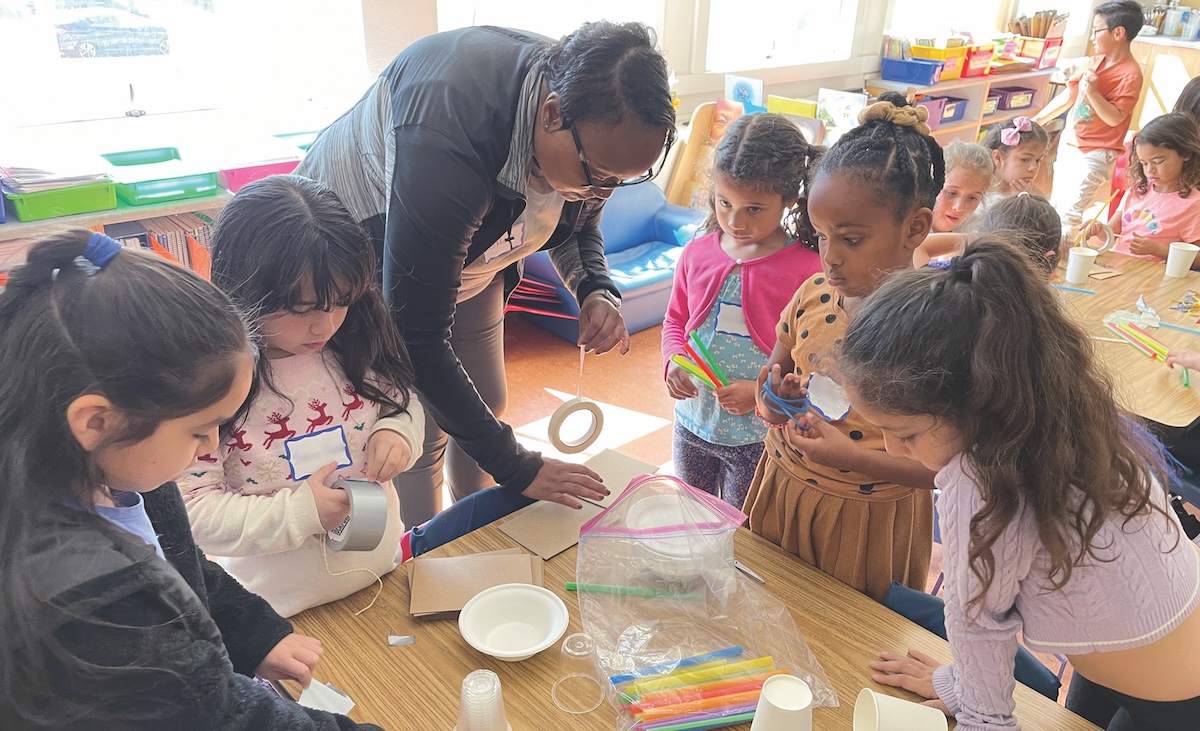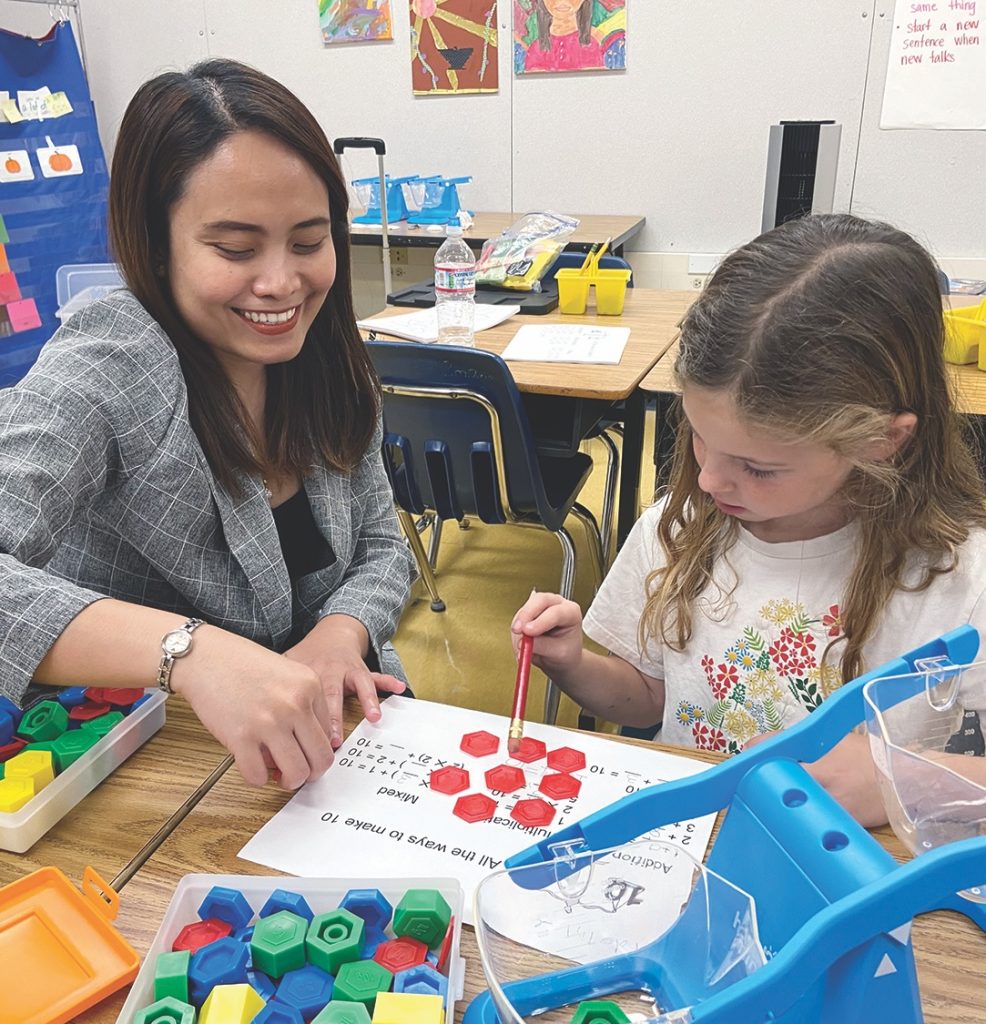From Gaps to Opportunities: Enriching Education for Berkeley’s Students

Although Berkeley is less than an hour’s drive from the hub of Silicon Valley, the region’s innovation and resources remain inaccessible to many of this city’s public school students. In the Berkeley Unified School District, white and Asian American students currently make up the majority of aspiring STEM professionals, while Black and Latinx students are underrepresented. This trend in Berkeley schools mirrors broader inequities in STEM careers – disparities that the Berkeley Public Schools Fund (Schools Fund) is committed to addressing.

Founded in 1983 in response to Proposition 13 – a 1978 California Constitutional amendment that drastically cut public school funding – the Schools Fund invests in equitable and enriching public education and channels community resources to support Berkeley’s most vulnerable students.
“Following Prop 13, the Berkeley [Unified] budget was going to be slashed by about a third,” says Duffy Ross, the Schools Fund’s interim executive director. “That’s why parents and community members started to organize out of living rooms and say, ‘What are we going to do? How are we going to bridge the gaps?’ They wanted to put resources directly into the hands of teachers.”
Today, the Schools Fund addresses opportunity gaps in Berkeley Unified through a three-pronged approach: Grants, Volunteers, and, more recently, STEM Initiatives. The nonprofit awards grants of up to $25,000 for entire schools and up to $15,000 for educator teams, while volunteers offer crucial learning support both inside and outside the classroom. The recently launched STEM programming aims to break barriers to STEM for underrepresented students.
“We’re really focused on bridging those gaps for students who would not be able to access the resources that they need to thrive,” says Greta Hadley, Schools Fund director of development. “The Berkeley Unified School District has one of the largest ‘achievement gaps.’ We call it an ‘opportunity gap’ because it has more to do with differing access to opportunities rather than capacity to achieve.”
To bridge these gaps, the Schools Fund’s comprehensive K-12 STEM initiative offers out-of-school enrichment opportunities designed to prevent disparities from widening at key developmental stages.
“We’re strategically focusing on out-of-school time, where access to extracurricular enrichment varies greatly between students,” adds Hadley. “It’s during these periods that the achievement gap widens between those who can afford these opportunities and those who cannot.” Each year, over 500 Berkeley public school students participate in STEM-focused Saturday camps, winter and spring break camps, and four weeks of summer Maker camp – all free for students of color, low-income students, English learners, girls, and gender-expansive youth.
These initiatives prioritize culturally relevant education and emotional well-being by ensuring mentors and staff reflect the diverse student population. “When kids have early exposure to STEM in environments where their peers reflect their backgrounds,” Ross says, “they develop a stronger sense
of belonging.”
A 2023 study from Penn State, the University of California, Irvine, and the University of Texas Health Science Center at Houston found that inequities in STEM begin as early as kindergarten and widen over time, often determining later interest and success in STEM careers. Early support in these areas is critical.
This is exactly what the Schools Fund is doing.
“We’re mapping backwards from high school to kindergarten, creating pathways from the very start for students furthest from STEM opportunities,” says Ross.
Berkeley Public Schools Fund
Donate now!www.berkeleypublicschoolsfund.org
Interim Executive Director: Duffy Ross
(510) 644-6244
Mission
To champion equitable public education for students, families, and our community. Through grants, volunteers, and STEM programs, we center equity for the benefit of our students and the entire community.
Begin to Build a Relationship
We know you care about where your money goes and how it is used. Connect with this organization’s leadership in order to begin to build this important relationship. Your email will be sent directly to this organization’s Director of Development and/or Executive Director.
For me, education is like the key to life. It’s the key to social equity and to health. It’s the key to lifelong learning. It’s the key to democracy. It’s part of being a member of a community. It’s just essential. That’s why I support the Schools Fund. And as a Schools Fund volunteer and donor, I see directly how the funds are being spent. It’s efficient, it’s effective, it’s filling in what families need for kids to really do well in school. I think every penny is well spent.
Empower Students by Bridging Gaps and Creating Pathways to Success
The Berkeley Public Schools Fund relies heavily on individual donations. “Every gift is a sustaining force,” says Director of Development Greta Hadley. “It supports our current work and expands the reach of crucial programs.”
•$1,500 can cover a student’s participation in the four-week summer STEM Camp.
•$5,000 can connect volunteers with 40 classrooms, benefiting students and teachers.
•$10,000 can fund an educator-initiated grant for transformative learning projects.
Additionally, as the Schools Fund enters its second year of STEM programming, it is halfway through its seed funding and seeking new high-level partners to help close opportunity gaps and sustain the initiative.
Key Supporters
Wareham Development
Mary & Stan Friedman
Anonymous
Judith & Stanley Lubman
Bernard E. & Alba Witkin
Charitable Foundation
Micki Miller
Zalec Familian
& Lilian Levinson Foundation
Bayer US
Ivan & Maris Meyerson
Lawrence Berkeley
National Laboratory
Florence Simon Beecher
Foundation
